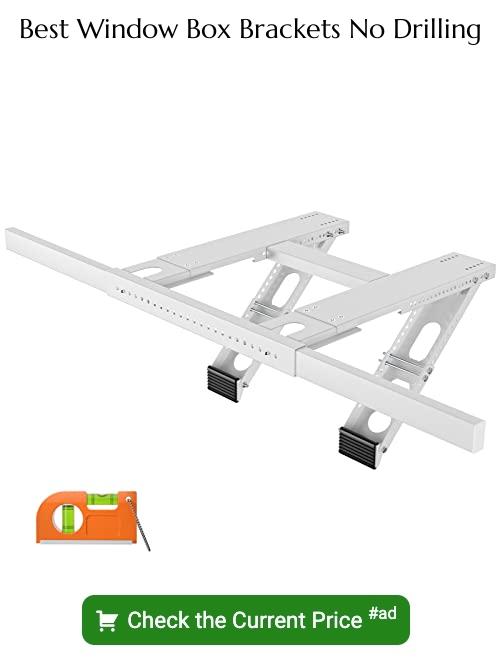Discover the simple steps to hang a window box without drilling, protecting your home’s exterior while adding a touch of beauty with blossoming plants.
Hanging a window box without drilling is a simple process that can be accomplished with the right tools and techniques. This article will guide you through the steps of using adhesive hooks and brackets, which are excellent alternatives to drilling holes in your window frames.
These solutions are not only easy to install, but also cause no damage to your windows. Read on to discover the complete method, including what materials you’ll need, how to choose the right adhesive hooks or brackets, and step-by-step instructions for a secure, drill-free window box installation.
Key takeaways:
- Choose a lightweight, well-draining window box for stability.
- Consider rust-resistant, weight-tested hangers for vinyl siding.
- Measure and place hooks evenly for proper balance and aesthetics.
- Ensure hooks securely grip siding before placing window box.
- Balcony flower boxes offer an alternative to drilling for railings.
Selecting a Suitable No-Drill Window Box
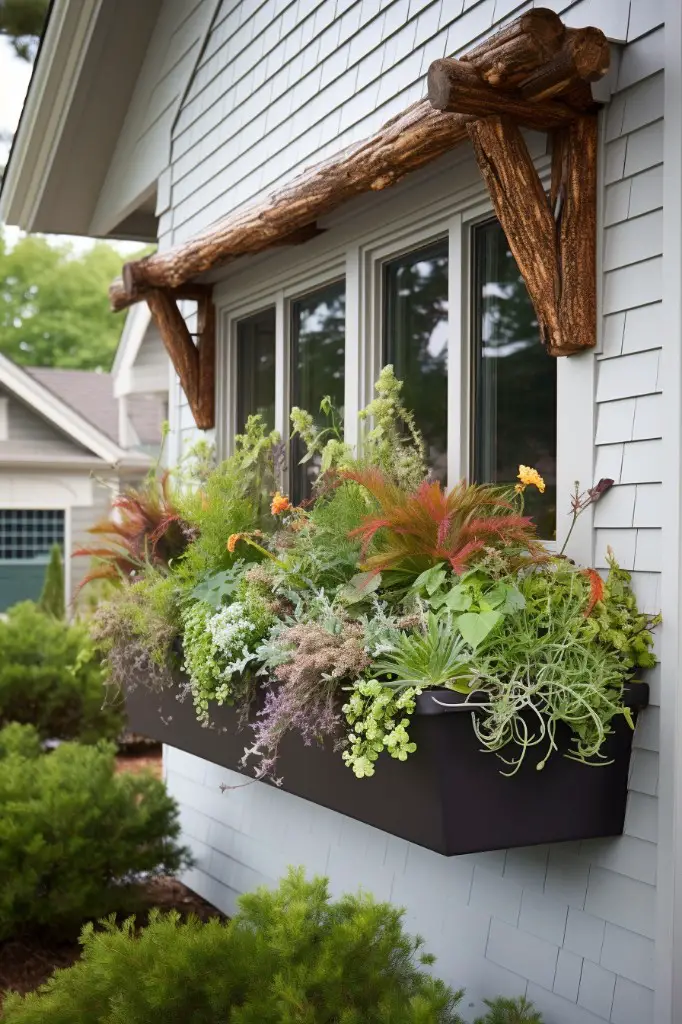
Regardless of the aesthetic you’re going for with your windows, choosing the right no-drill window box is crucial. The first rule of thumb is to ensure it’s light enough to minimize the strain on the window frame or siding. Lightweight materials such as fiber, vinyl, or resin are ideal, plus, they resist rot and require less maintenance than wood.
The second point to prioritize is the size. This should match the dimensions of the window, since a box that’s too large could pose issues when it comes to stability and balance on the no-drill hooks. Ideally, the box is the same width as the window, or possibly a couple of inches longer for aesthetics.
Lastly, consider the drainage. For plants to thrive, the box needs sufficient drainage to prevent root damage from excessive water. Look for boxes with pre-drilled drainage holes, or be prepared to make a few yourself. Just remember, doing so might somewhat contradict the no-drill philosophy.
Choosing Suitable Vinyl Siding Hangers
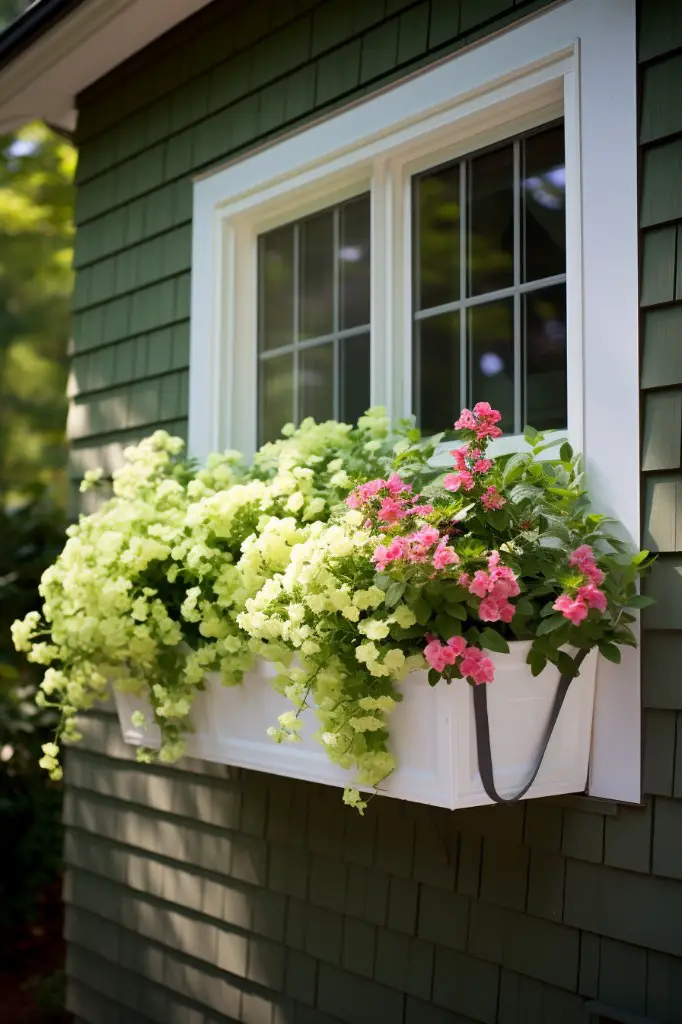
In selecting the right hangers for your vinyl siding, a few key points to remember:
1. Load Capacity: Always check the weight they can bear. For heavy window boxes, opt for weight-tested siding hangers.
2. Material: Rust-resistant material is ideal, especially for wet/damp climates. Consider stainless steel or coated metal options.
3. Compatibility: Make sure your chosen hangers fit your specific siding seamlessly.
4. Quantity: Plan how many hangers you’ll require. As a guide, larger boxes may need more to distribute the weight evenly.
5. Ease of Installation: Select hangers designed for user-friendly installation, minimizing hassle and ensuring a stable fit.
Measuring the Distance for Vinyl Siding Hooks Placement
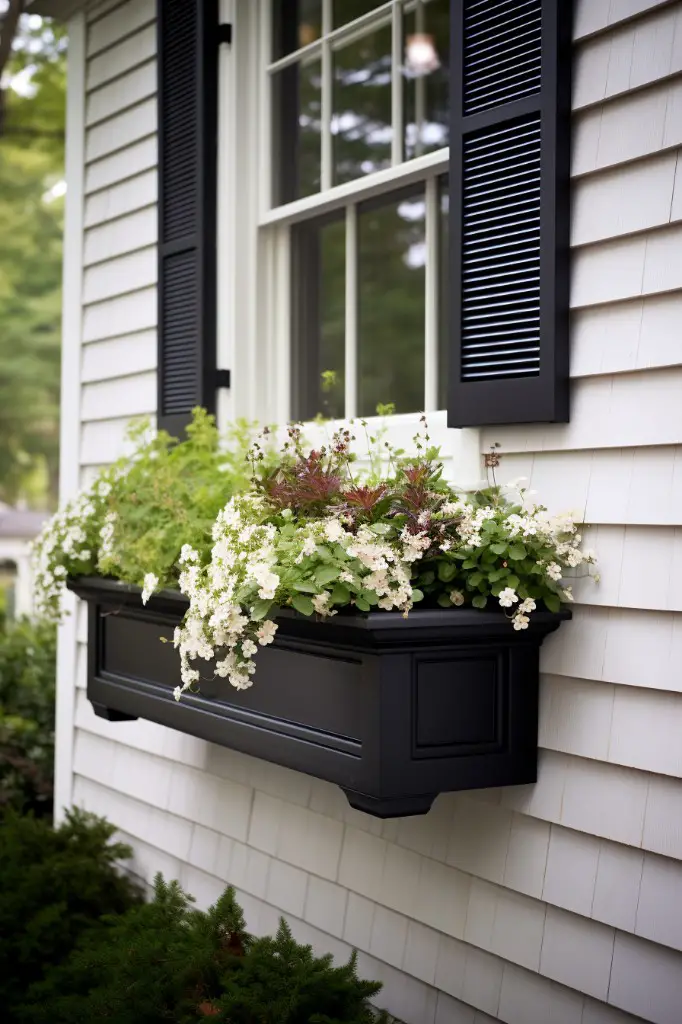
To ensure proper balance and aesthetic appeal, remember to find the center point of your window. Begin by measuring the entire width, jotting the dimensions down with the help of a measuring tape. Divide this figure by two – that’s your center point.
Next, decide how extensive you want your window box to be. It could be the same width as your window or perhaps somewhat broader; it hinges largely on your preference. Once you’ve chosen the extent, split that dimension in half.
Subtract the smaller value (half of the box length) from the larger one (half of the window length). This difference will give you the precise distance from the window edge, where you should be placing the first hook. Following the same rule, measure similarly on the other side. This placement ensures your window box hangs evenly, augmenting the curb appeal.
Securely Locking the Hooks On the Siding Panels
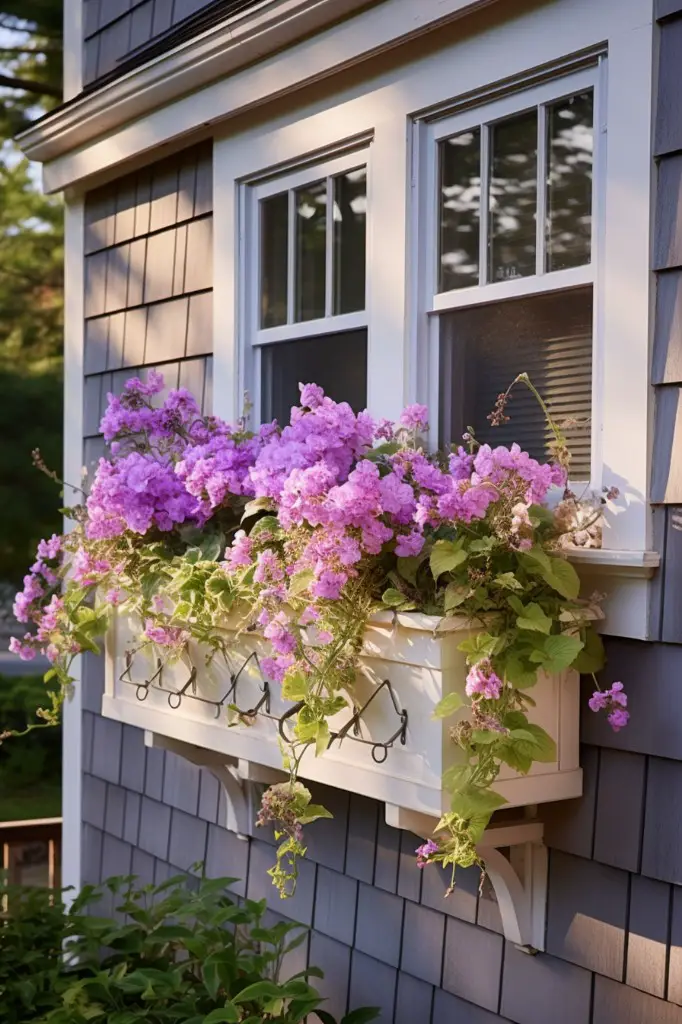
To ensure a secure lock, follow these steps:
1. Choose a part of the siding panel that feels most secure. It should be flat, firm, and away from any edges or seams.
2. Glide your vinyl siding hook upward until the hook’s bottom securely grips the vinyl siding panel.
3. Repeat the process, maintaining the measured distance between each hook. Use a level to ensure they align properly.
4. Once your hooks are in place, gently tug on them to check their firmness before placing your window box onto the hooks.
Remember, if the hooks are not secure, your window box might not hold. Properly secured hooks ensure the lifetime of your window box and protect your house from any potential damage.
Exploring Using Balcony Flower Boxes As An Alternative
When considering alternatives to traditional window boxes, balcony flower boxes offer a viable solution without requiring any drilling. Primarily designed for balcony railings, these holders come equipped with adjustable clamps that fit various railing widths.
Implementation is typically swift and straightforward. Many models have a quick-release feature, making installation and removal a breeze. So admire your petunias or geraniums from inside or out.
Remember, there’s one caveat. Ensure your railings can withstand the added pressure, especially when plants are watered, and the weight increases. The last thing anyone wants is a bending railing. Keep a keen eye on the load limit to avoid any potential mishaps.
Adjustability provides versatility, but it’s useful to double-check measurements. If the box-holder is too small or large, there can be issues with stability. Spend extra time getting this right, and you’ll have an unobtrusive alternative to drilling in no time.
Understanding Potential Challenges in Hanging Window Boxes Without Drilling
First and foremost, weight can be a significant concern. Window boxes, particularly when filled with soil and plants, can be quite heavy. Overloading a no-drill solution could result in damage to the siding or box, or worse, the box could fall entirely.
Secondly, secure attachment is crucial. Siding isn’t designed to carry load-bearing items like flower boxes, and using inadequate hooks could result in them slipping or dislodging.
There’s also an element of weather-resistance to consider. Your selected method should resist wind, rain, and other elements; otherwise, it could wear out or become loose over time.
Last, the aesthetic appeal is in the balance. Suboptimal positioning can affect the overall look of the window. Therefore, it’s important to ensure the box aligns perfectly with the window even without needing to drill holes. It should complement the window and not look awkwardly positioned.
Remember each of these points as you explore non-drilling methods, ensuring a successful installation that is both beautiful and secure.
Evaluating the Feasibility of Hanging Window Boxes Without Drilling
Before proceeding, it’s essential to assess the practicality of this project. Clearly, one key advantage is avoiding potential damage to your exterior walls. Drilling holes for traditional brackets can weaken the integrity of your sidings or masonry, particularly in older properties.
Also, opting for a non-drill installation allows the freedom to frequently change the placement of your window box according to styling preference or sunlight necessity. This eliminates unsightly, unused holes from previous positions.
However, note that these undrilled arrangements generally have limited weight capacity. The materials your boxes are made from, the type of plants you plan to house and whether your boxes will be exposed to heavy rainfall can all dramatically increase weight. Heavier window boxes may require stronger support which non-drilled options might not offer.
Lastly, for vinyl siding, consider that it expands and contracts with temperature fluctuations. Therefore, an incorrectly installed hook could bulge or warp the siding. Opt for a method designed for vinyl to avoid this.
Now aware of these considerations, the merit of undertaking a drilling-free installation becomes clear.
Deciding Between No-Drill Window Box, Vinyl Siding Hangers or Balcony Flower Box
It’s important to match your window solution to your individual needs and environment. No-drill window boxes are a popular choice, offering excellent stability and ease of installation. They are typically crafted from robust materials, ensuring they stand up to the elements.
Vinyl siding hangers, on the other hand, are versatile implements that can be used on all types of siding. Their adjustable design and secure grip make them an effective tool for hanging window boxes without causing any damage to your siding.
Alternatively, balcony flower boxes bring a different approach. Configured to sit snugly over railings, they can be a great option for apartment dwellers or for homes with balconies. Their unique design aesthetic can add visual appeal to your exteriors while offering a convenient hanging solution with no need for drilling.
Reflect on these choices, considering the style of your home, the type of siding or railings you have, and your personal design preferences.
FAQ
How do you hang a window planter without drilling?
To hang a window planter without drilling, you can utilize Command strips or hooks, which are versatile enough to be used on both window ledges and bricks.
How do I keep my window boxes from falling down?
To ensure your window boxes don’t fall, secure them using metal brackets bolted to the wall, extended windowsills, and strong wire tied to screw eyelets on both sides of the box.
What are some effective alternatives to drilling for securing a window box?
You can secure a window box using strong adhesive brackets, tension rods, or window box cable systems instead of drilling.
How can one maintain the sturdiness of a window box without using drills or screws?
By incorporating strong adhesives or tension rods, one can uphold the robustness of a window box without resorting to drills or screws.
Is it possible to use adhesive methods for hanging a window box, and if so, how reliable are they?
Yes, adhesive methods can be used for hanging a window box, although their reliability often depends on the weight of the box, the strength of the adhesive, and the type of surface it’s attached to.
Related Stories
- How to Install Window Blinds Without Drilling: Easy No-Drill Guide
- How to Hang Valance: Easy Steps for Dressing Your Windows
- How to Board Up a Window Without Drilling: Easy, No-Drill Method Guide
- How to Use Drapery Pins: A Comprehensive Step-by-Step Guide
- How to Hang a Stained Glass Window: Easy Steps for Perfect Display
Recap
